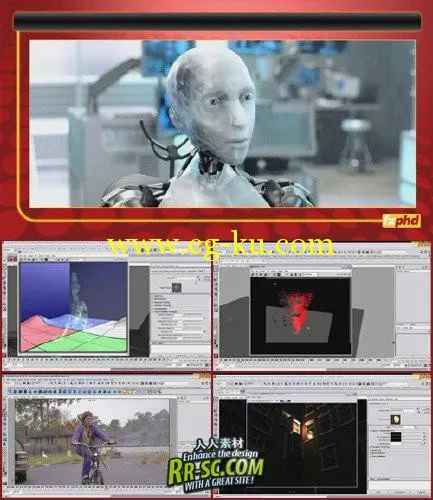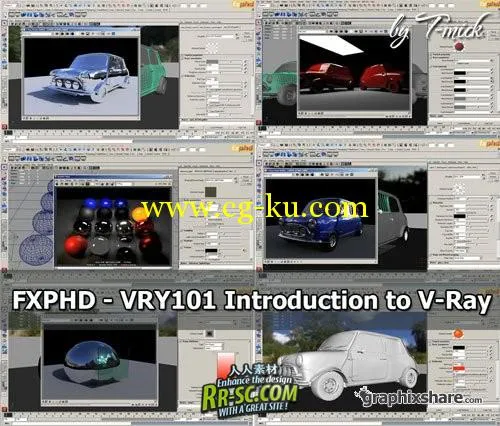业内大名鼎鼎教育机构FXPHD出的VRY101 Introduction to V-Ray 教程,V-Ray渲染器教程。专业讲解V-Ray渲染设置和一些技巧
V-Ray是由专业的渲染器开发公司CHAOSGROUP开发的渲染软件,是目前业界最受欢迎的渲染引擎
基于V-Ray 内核开发的有V-Ray for 3Dmax、Maya、Sketchup、Rhino等诸多版本,为不同领域的优秀3D建模软件提供了高质量的图片和动画渲染。除此之外,V-Ray也可以提供单独的渲染程序,方便使用者渲染各种图片。
教程内容:
Class 1: Intro to Vray. I'll give a bit of information on Vray, go through the basic Vray settings, and we'll get ourselves familiar with how Vray is setup.
Class 2: Working with lights. We'll look at the basic vray lights, their main settings, and where they function best. Sphere light, rectangle light, and dome light.
Class 3: A closer look at lights in Vray, how to use HDR files and flat texture files into dome and rectangle lights, a quick look at IES lights and the sun & sky system in Vray. Lastly, a look at the cutoff threshold of the lights, as a way to optimize the calculation of the lights.
Class 4: Basic VRay Shader overview, looking at the VRayMtl. Spending most of the time on reflection/refraction (as this is a big part of the VRayMtl), and how VRay handles specular highlights and various aspects of reflections/refractions. Also a quick look at how to control reflections by using maps to break up reflection strength and glossiness.
Class 5: A look at the VRayBlendMtl, and a few ways of blending shaders together to create more complex shaders, we'll look at creating a car paint shader, as well as blending to create a few other types of looks, and then finally a bit of optimizing on the shaders reflection tracing, and how far it can actually be taken.
Class 6: Additional vray shaders. We'll look at some of the other vray shaders and textures, such as the the vray dirt, light Mtl, and the fastSSS2 shader.
Class 7: Looking at utilities in VRay, including object properties, subdivision, displacement, as well as multi-matte and extra tex render elements. Ways to provide mattes and utility textures for compositing.
Class 8: Shaders for vehicle project. For this lesson, we'll start creating some of the main shaders for our vehicle project. We'll look at rubbers, plastics, glass, chrome, and car paint.
Class 9: General car/model geometry setup for rendering, things to avoid and how to fix them. ** sure glass objects have proper geometry thickness, and ** sure normals are facing the correct direction. Quickly touching on using imbedded matte channels through refractions.
Class 10: Final vehicle project lighting and shaders setup. Here we'll be doing final tweaks to our lighting and shaders for a better look, as well as running through a few ways to optimize the render settings, lights, and shaders.
115



发布日期: 2011-5-28